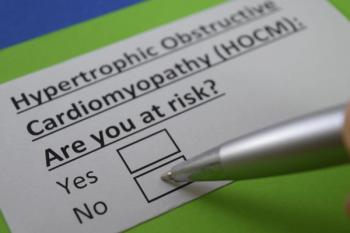
Pharmacy staffing levels can threaten patient lives
Chain stores often require pharmacists to dispense 300 or more prescriptions a day. That's 37.5 Rxs an hour in an 8-hour shift or 1.6 minutes per prescription. You can't even get a doc on the phone in that amount of time.
Anna Leon GuerreroThe pharmacy profession is in jeopardy if it does not respond to the immediate crisis of the understaffing of pharmacies, especially those affiliated with chain stores. This understaffing has become increasingly apparent with the recent injunction and monetary
Medication errors
These fines are insignificant compared to
Another study found that
Lack of consultation
The Massachusetts Board of Registration in Pharmacy conducted a survey in which pharmacists identified reasons for errors. Reasons included too many telephone calls, overload, too many patients, no one available to double-check, illegible/misinterpreted prescription, and staff shortage.5
Pharmacists are not finding the time to do the job with which they have been charged; counseling is not being done. As a result, patients are more often asked by the clerk to sign a statement waiving their consultations. The issue of failure to consult would be eliminated if the staffing were adequate.
Nonprovision of consulting services also contributes to the issue of medication nonadherence. Only half of the 3.2 billion prescriptions dispensed in the United States are taken as prescribed. Approximately 125,000 deaths are linked to medication nonadherence annually, with costs estimated to run between $100 billion and $300
Passage of California’s SB493 meant that pharmacists are finally recognized as healthcare providers. However, the question remains of how they will perform additional duties that include immunizing, screening for cholesterol and blood pressure, and counseling on diabetes, tobacco cessation, and birth control, in the time available.
Time constraints
Chain stores often require pharmacists to dispense 300 or more prescriptions a day, which translates to 37.5 prescriptions an hour in an 8-hour shift; that in turn translates to 1.6 minutes per prescription, during which time a pharmacist must verify the accuracy of the label, check the patient profile for duplications/interactions, contact prescribers if any issues arise, call the insurer as needed, verify that the contents of the prescription vial are accurate, and counsel the patient on the medication - impossible!
Despite multiple citations and fines imposed on chain pharmacies, and lawsuits brought on behalf of the general public, chain corporations still fail to counsel patients, and the result is a steady stream of medication errors.
Boards of pharmacy need to step up and enact necessary regulations or guidelines that will create safe working environments for pharmacists. Fines, not for the individual pharmacist but for the corporate entity, should be increased in instances of excessive dispensing and failure to counsel. Only then will pharmacists be enabled to do what they do best: provide quality services to patients.
Anna Leon Guerrerois a 2016 PharmD candidate at Touro University in Vallejo, Calif. Contact her at
References
1. Office of the District Attorney County of San Diego. 2015. Walgreens Pharmacy to Pay $502,200 to Resolve Consumer Protection Case [Press release]. http://bit.ly/wagfine.
2. Nair RP, Kappil D, Woods T. 2010. 10 Strategies for Minimizing Dispensing Errors. Pharmacy Times.
3. University of Arizona Health Sciences Center. “Pharmacists’ Workload Contributes to Errors.” ScienceDaily. ScienceDaily, 25 April 2007. Retrieved from http://bit.ly/pharmworkload
4. Grasha, AF. Psychosocial factors, workloads, and risk of medication errors. US Pharm. 2002;27(4):HS32-HS52.
5. Massachusets Board of Registration in Pharmacy. Medication Error Study. Massachusets Office of Health and Human Services.
6. Iuag A, McGuireJ. Adherence and healthcare costs. Journal ofRisk Management and Healthcare Policy. 2014;7:35–44.
The author thanks preceptor Dr. Aglaia Panos for guidance in preparation of this article.
Newsletter
Pharmacy practice is always changing. Stay ahead of the curve with the Drug Topics newsletter and get the latest drug information, industry trends, and patient care tips.











































































































































































































